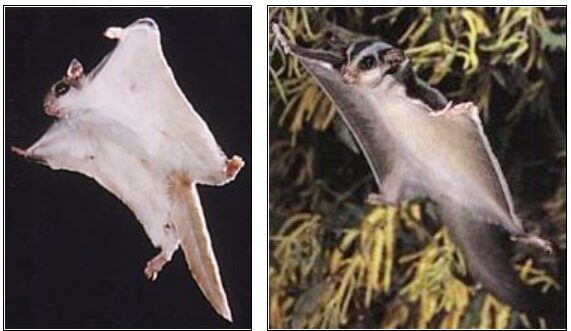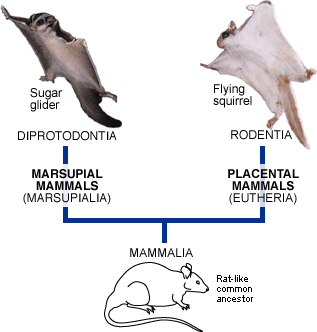Beyond being cute and cuddly, flying squirrels and sugar gliders have many striking similarities: big eyes, a white belly, and a thin piece of skin stretched between their arms and legs, a trait which helps them “glide” and remain stable when leaping from high places.

But sugar gliders and flying squirrels also have some key differences. Most importantly, they reproduce and bear their babies in fundamentally different ways:
- Flying squirrels are placental mammals. Placental mammals spend a long time developing inside the mother’s body being nourished by a placenta before they are born.
- Sugar gliders are marsupial mammals, like kangaroos. Marsupial mammals may only spend a short time developing inside the mother’s body and are very tiny when born. After birth, a baby marsupial crawls into its mother’s pouch and is nourished by her milk as it continues to grow and develop.
Flying squirrels and sugar gliders are only distantly related. So why do they look so similar then? Their gliding “wings” and big eyes are analogous structures. Natural selection independently adapted both lineages for similar lifestyles: leaping from treetops (hence, the gliding “wings”) and foraging at night (hence, the big eyes).

